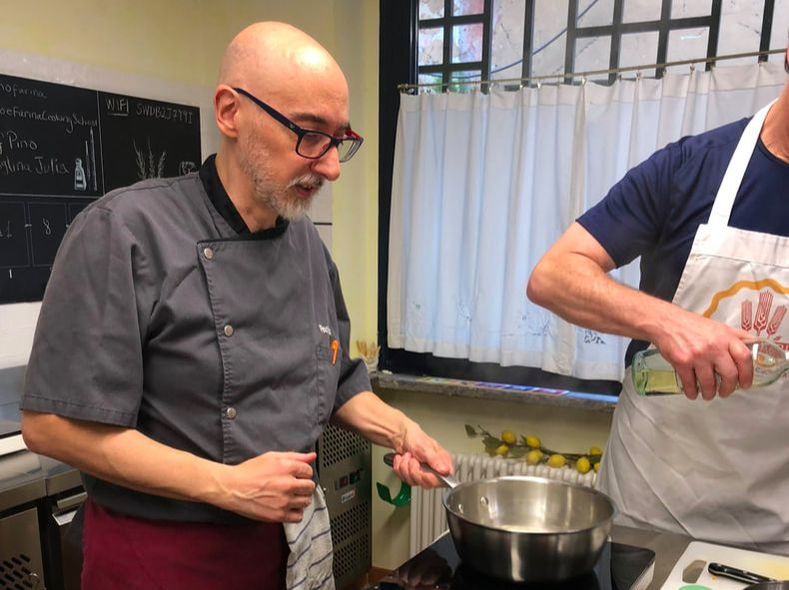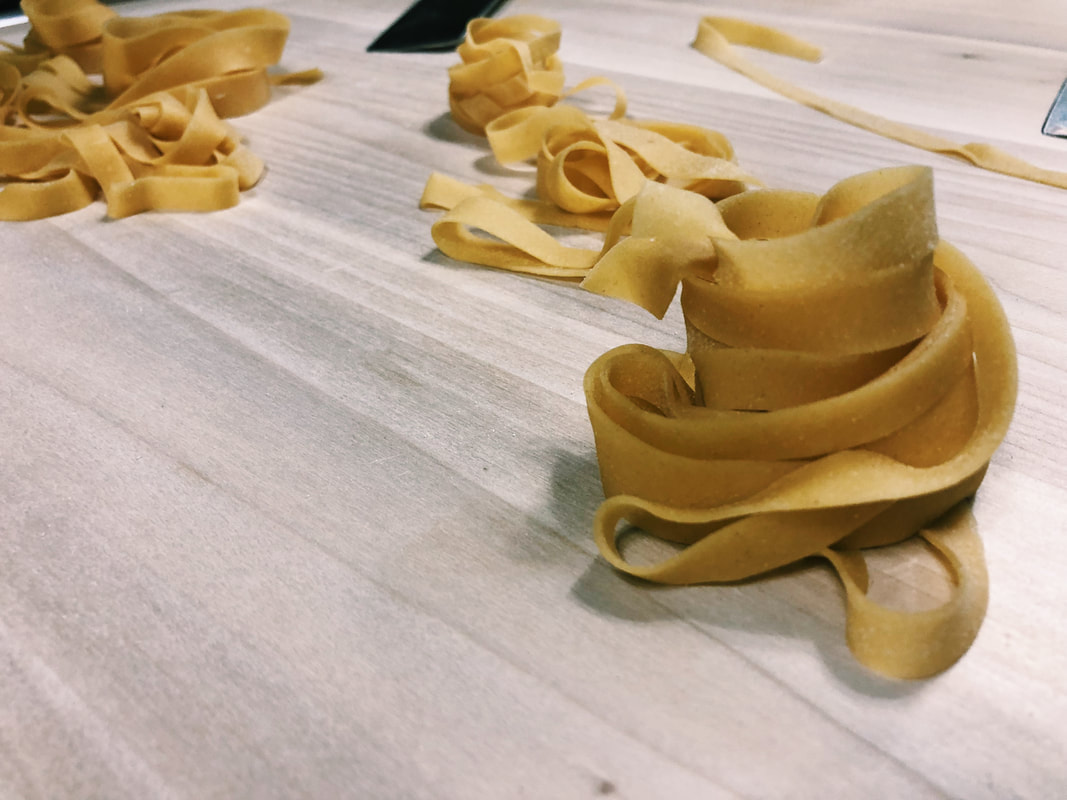|
I’ve been in Rome now for two weeks and it’s been an adjustment. Everything is different. It’s a new city after all and a new house, a new language...a new routine. Plus I went to Portugal for a few days which completely threw me off the loop but at least it made me miss Rome. I guess it’s starting to feel like home now! Though it’s starting to feel better being here now, things were a bit rocky for the first few days. Rome is a touristic city and thus its practically bound with tourist traps. Something I am very serious about avoiding. And even though my research is deep and detailed, I am still no Italian. I have been in Italy for about 14 days which is no where near in comparison to someone who is an Italian and has been for generations. In these last couple of weeks, I did have the chance to taste some traditional Roman dishes like cacio e pepe and gricia with alla carbonara and all' amatriciana still left to try. They were good, but I was feeling deflated and uninspired because I still felt like I wasn't tasting the real deal. I starting doubting the sauce, the pasta...was this the real deal or was I being tricked? So I came to the conclusion that I needed something more than a dinner. I needed someone who could do more for me than just serve me a plate of pasta to eat. I wanted to learn about the sauce itself, the history, and most of all the pasta, the real hand made pasta. And so with a little luck, I found Grano & Farina, a cooking school in Trastevere, not a touristy one but a traditional one. After all I am here to learn not to be entertained right? I found that they offered a variety of classes from that were broad to more regional concentrated ones like "The 4 Roman Pastas" class where you learn how to make all of the four typical pastas of Roman cuisine. For my first class, I did a more broader class, "Mother's Sauces." Let me take you through my day with Chef Pino and Sfoglina Julia. Perhaps my entrance to the little but homey cooking studio in Trastevere could have been a little more graceful but I guess I run well on Italian time. So I sprint in the door at 10am for my class. I was supposed to arrive 10 minutes early... Oops. Regardless Sfoglina Julia and Chef Pino were completely welcoming, even offered me a coffee before handing me my apron! Normale. No need to sweat it. The class started with everyone washing up and putting on their aprons before Chef Pino took us under his wing to start making the sauces for the day. We made three sauces: A Cream (Panna) based sauce, Bolognese, and Puttanesca. You may know this already but pastas in Italy usually have a history behind them. That is why in every region you go, you find different names, sauces, and types of pasta. First we made the Bolognese because this one takes the longest to cook as it needs to simmer for one hour for every pound of beef that you use. The secret is here: slow cooking. It’s not meant to be a fast sauce that you can quickly put together and sit down to eat. Same with its accompanying pasta, it takes a little bit of time to make it as its egg based. Also, the sauce tastes better the more you rest it which is why most of the time it’s a sauce that is made one day in advance (at least). The Bolognese sauce is originally from Bologna (hence the Bolog-nese). Bologna is said to be the city of fat with its typical dish rich with minced ground beef and other products like Salami and Mortadella. Okay, now that you have a little bit of history, let's get to the sauce! First of all it’s not a red sauce as many of us have been fooled to believe. There is some tomato in the sauce but the sauce is not a tomato based sauce, it is actually meat based. This makes the sauce a brown color more than a red color. Plus there is not much “sauce” to it. What I mean it doesn’t look like a gravy but instead the pieces of minced ground beef prominently stand out against the reduced mirepoix. The traditional Bolognese is paired up with the Tagliatelle pasta (which Sfoglina Julia taught us how to make, roll, and cut). This type of pasta really pairs up well with the sauce, maybe it was just because it was fresh pasta made by hand a few hours before but it was pretty darn delicious. Such a simple sauce but it is it’s slow cooking process that amplifies its flavour and taste. The next sauce was cream (panna) based sauce. So far I have just been encountering panna while making gelato. This sauce is made with porcini mushrooms and peas. It’s a rich, creamy, and sweet sauce, perfect to warm up your heart and soul in the winter or really any day of the year. The umami flavour of the porcini mushrooms really elevate the depth and aroma of this sauce. We paired this sauce up with a garganelli pasta (egg based) which we rolled by hand. Oh this was a delightful pasta to eat, I couldn’t help myself to seconds! The garganelli had that little crunch of al dente pasta, the porcini have it a meaty taste, the peas added sweetness, and the panna with the parmigiano added the right amount of creaminess. Molto buono! The third sauce we made was the Puttanesca sauce, for those that are Spanish, you may recognize the first part of the word. It means the same in Italian and it’s not a spelling mistake. The sauce is said to have originated by “putas” (prostitutes) who would make this sauce to attract clientele. The sauce is very aromatic as its carries sardines, capers, and olives. It’s a tomato based sauce and we paired this up with the Malloreddus pasta, typical of Sardinia. This sauce was very tasty on its own (no need for some parmigiano here). It was also lovely to see how the sauce clung to the fresh pasta. The ridges on the Malloreddus pasta help capture the sauce. Moreover, the pasta dough is rolled out on a wooden surface (and not for example a stainless steel or marble one), which is important because it gives the exterior of the pasta a texture that holds the sauce better. After a morning of making sauces and pasta, we all sat down to enjoy a lovely lunch with everything we had made. It was all so fresh! My gosh what a difference it makes to have fresh pasta with homemade sauce. I ate all three dishes. Yes, three pasta dishes in one sitting and it was the best thing ever. This was what I was looking for when I came to Italy. I want to taste the real deal and this cooking class with Chef Pino and Sfoglina Julia allowed me to experience just that. Not just pasta making and cooking but a little bit of history as well. Food isn’t just food, food is culture. Culture and history allow us to better understand why and how types of dishes came to be and why they have remained such an integral part of the lives of some people. If you are ever in Rome and would like to do something a little less touristy but still part of the Italian experience, then I suggest that you look into booking a class with Grano Farina with Chef Pino and Sfoglina Julia! Check out their website: https://www.grano-farina.com/ -Karina
1 Comment
kandiara
2/28/2024 09:45:53 pm
Your expertise is evident in every word of this well-crafted post. Thank you for sharing your knowledge. <a href="https://4ed7d5hfr8jhlu33fl8jurez3c.hop.clickbank.net" target="_blank">click here</a> for additional information.
Reply
Leave a Reply. |
AuthorWrite something about yourself. No need to be fancy, just an overview. ArchivesCategories
All
|








 RSS Feed
RSS Feed
